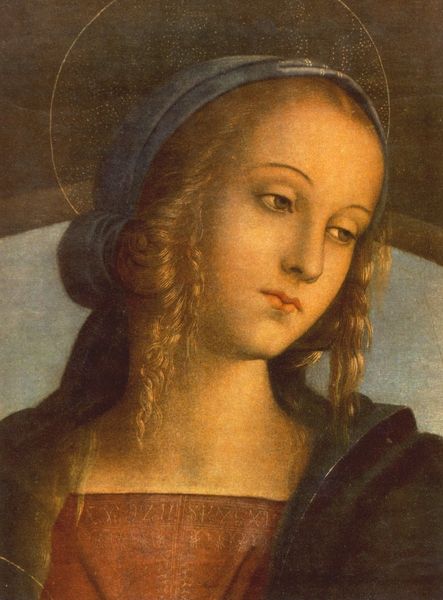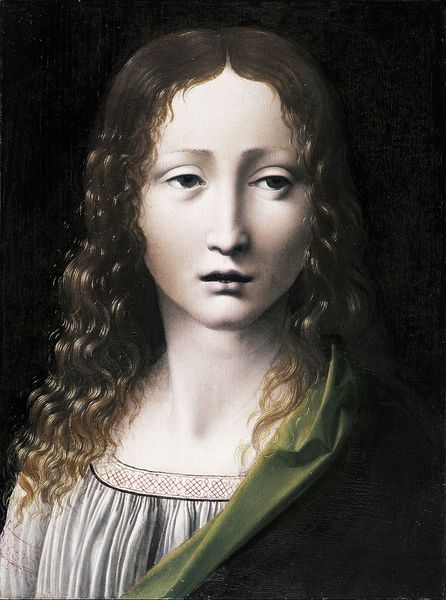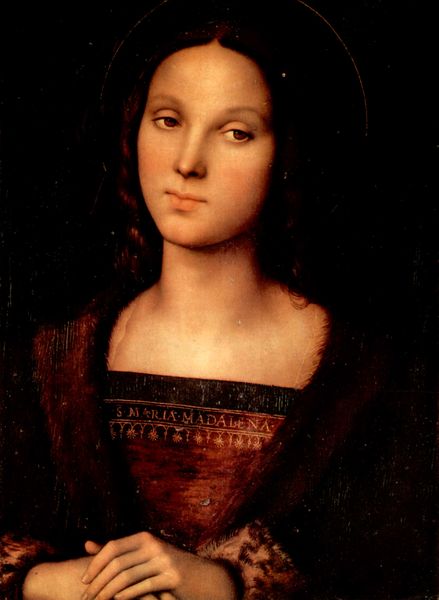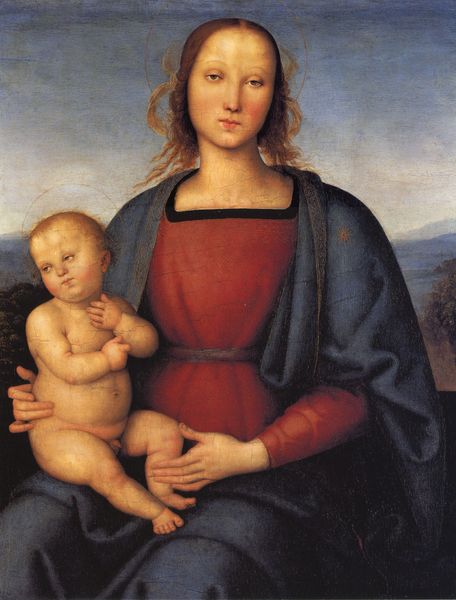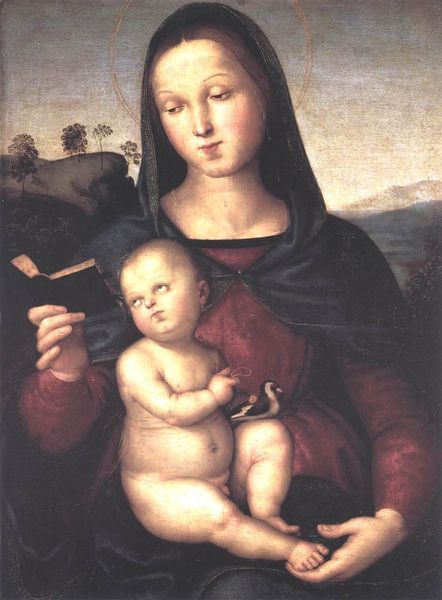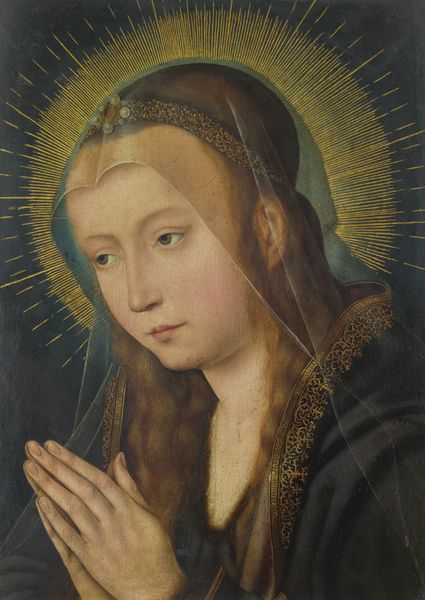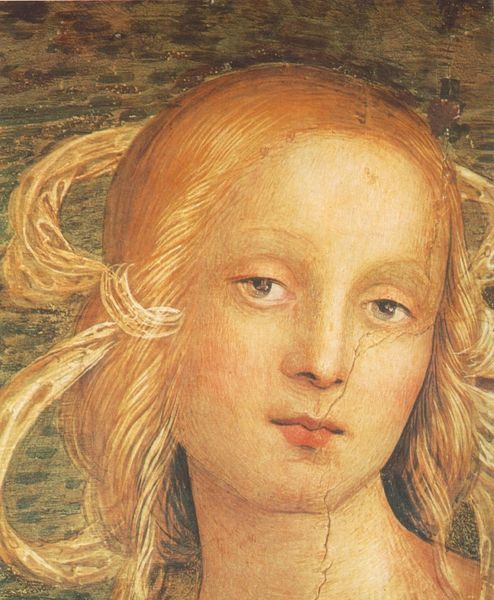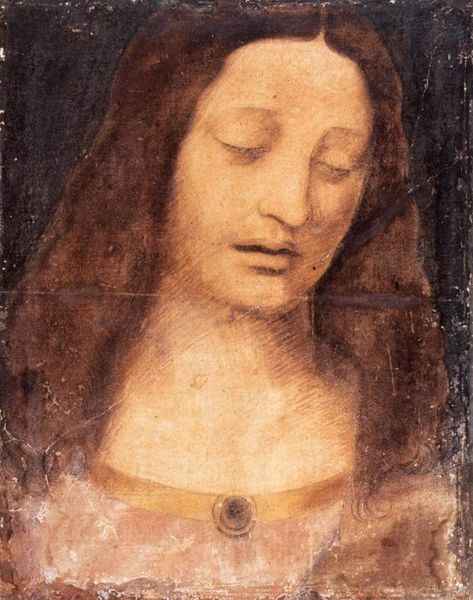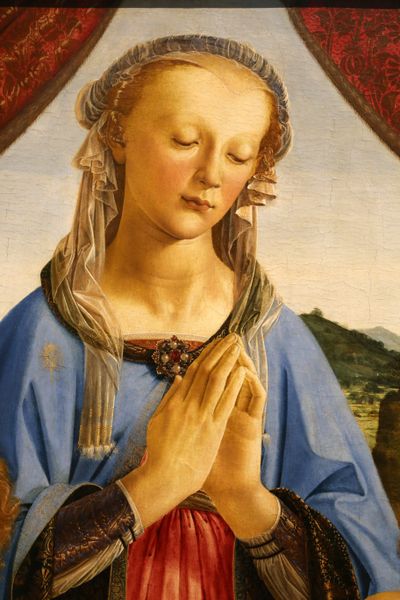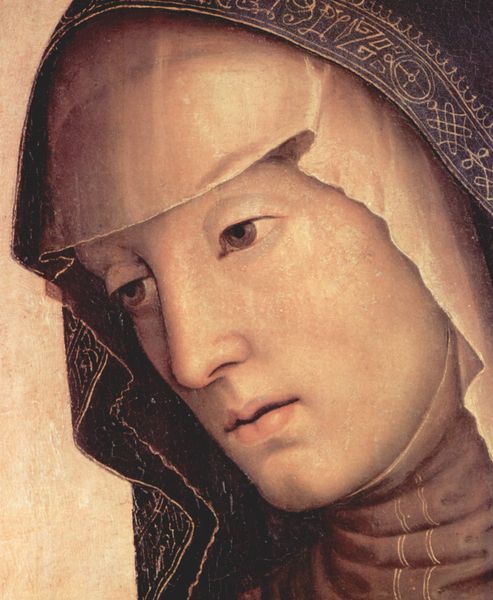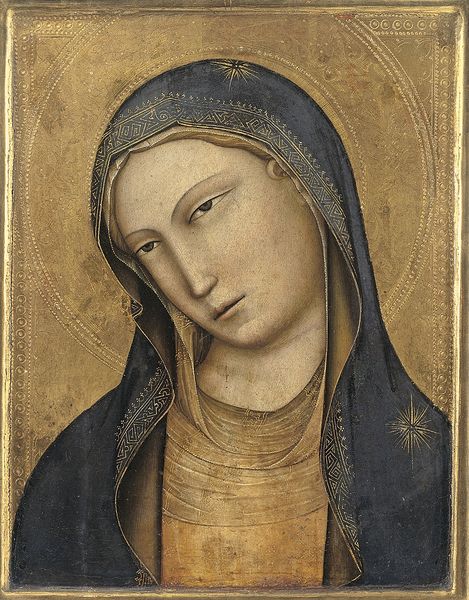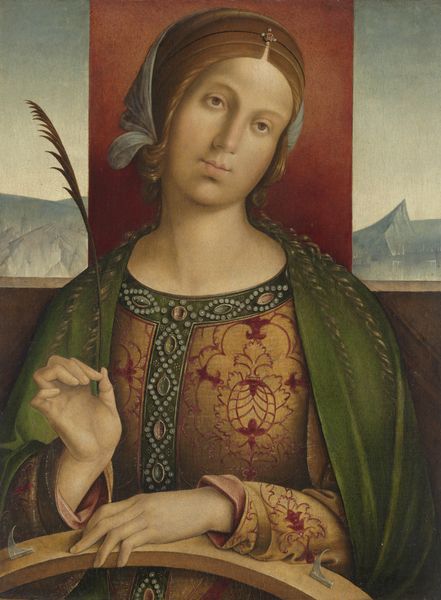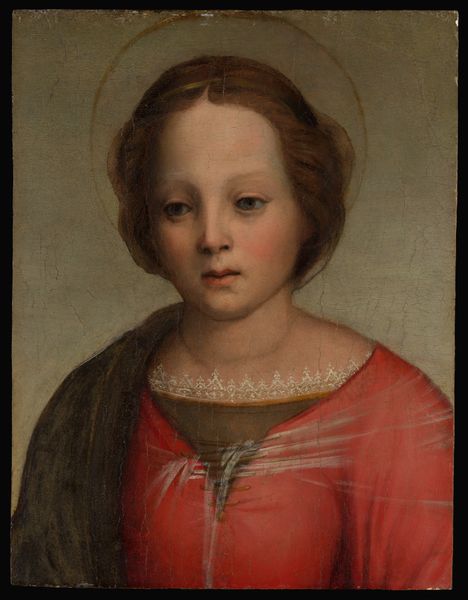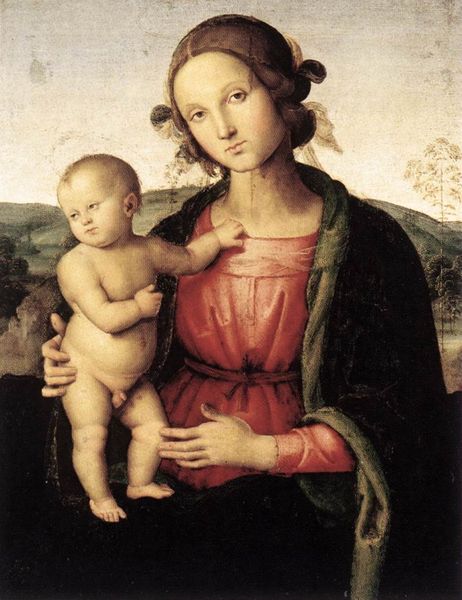
Copyright: Public domain
This is a detail of Pietro Perugino's painting "Madonna with Child." At first glance, you're drawn into the serene symmetry of the Madonna's face. Perugino uses soft, almost hazy lines to define her features, creating an ethereal quality, while the balance of light and shadow gives her face a subtle three-dimensionality. The color palette is restrained, dominated by muted blues, reds, and earth tones, that evokes a sense of calm and timelessness. The painting reflects broader artistic and philosophical concerns of the Renaissance—a renewed interest in classical ideals of beauty and harmony. However, the artist doesn't just mimic classical forms; he reinterprets them through a Christian lens. This reflects the semiotic system of signs, where the Madonna is not just a woman but a symbol laden with cultural and religious meaning. Notice how the gentle gradations of color and the subtle play of light suggest depth and volume without resorting to harsh, angular lines. This interplay serves as a window into the complex negotiation between religious symbolism and humanist ideals during the High Renaissance.
Comments
No comments
Be the first to comment and join the conversation on the ultimate creative platform.
